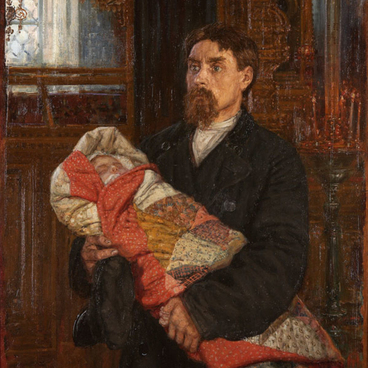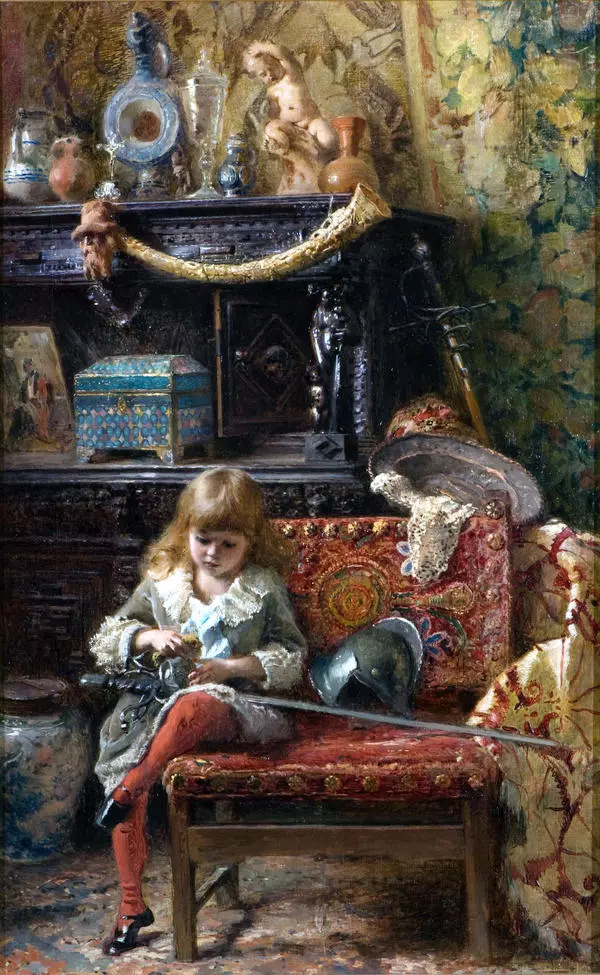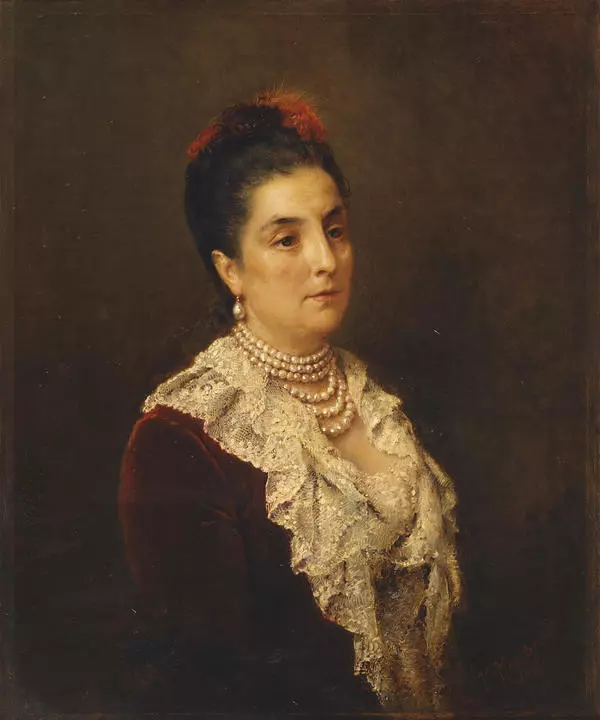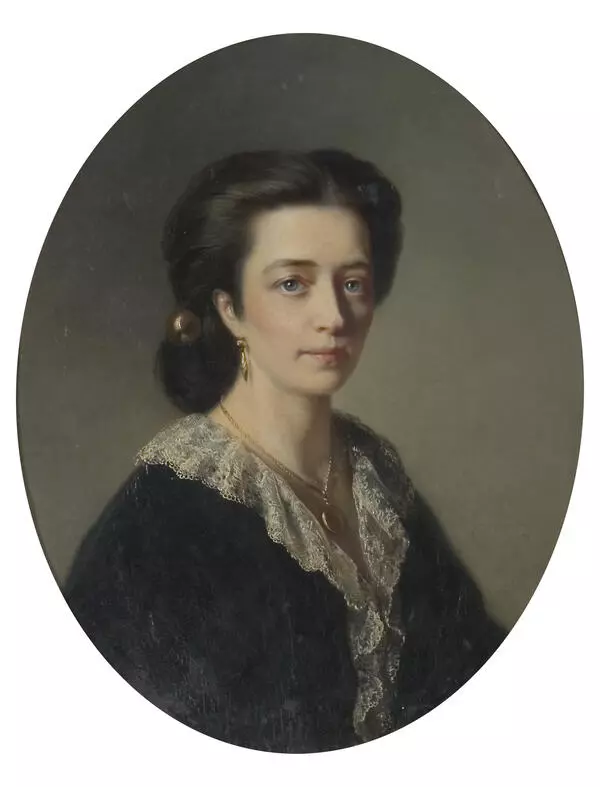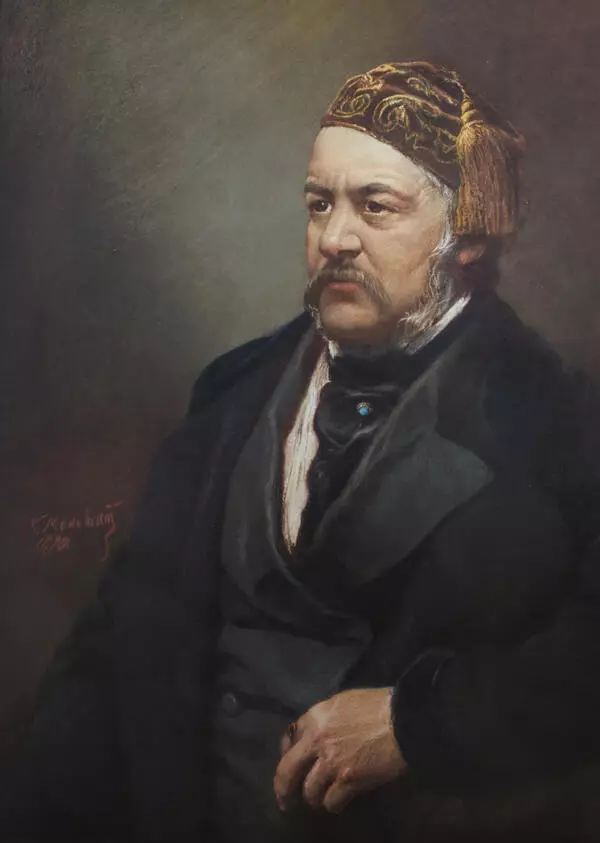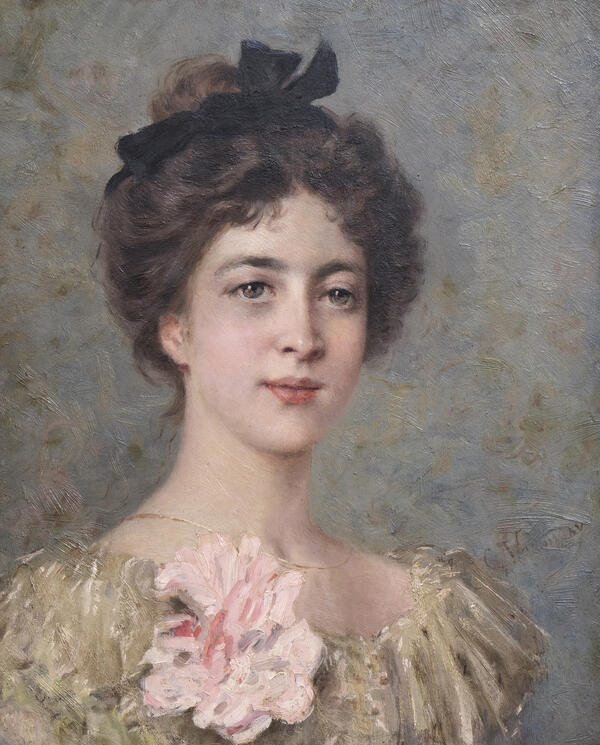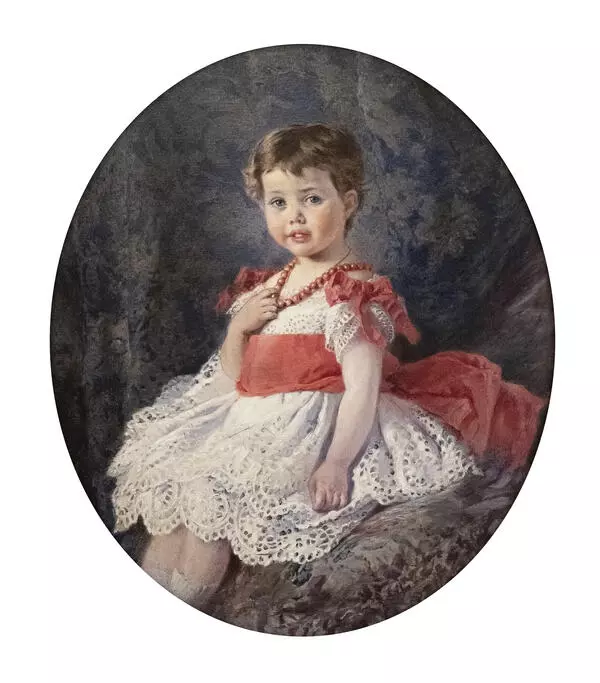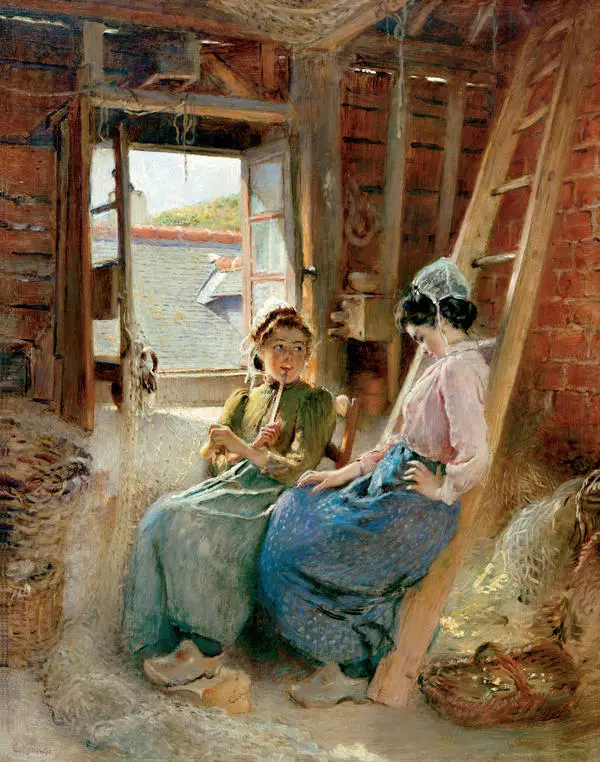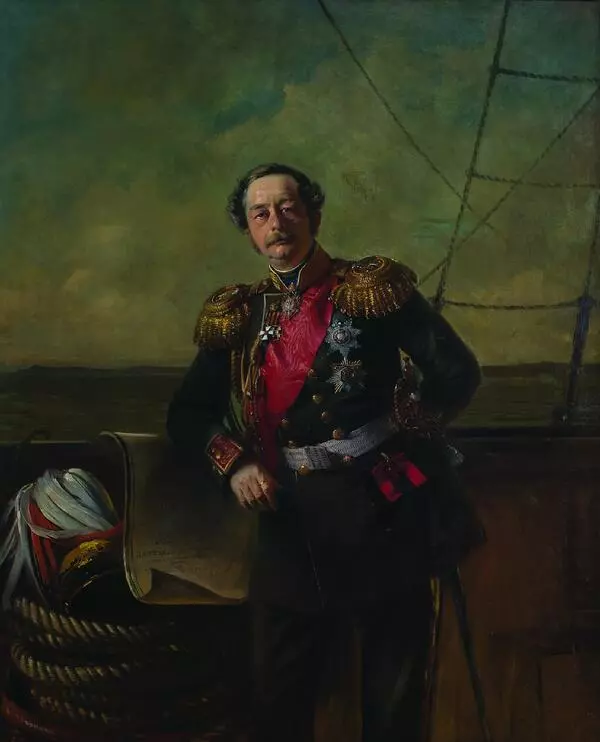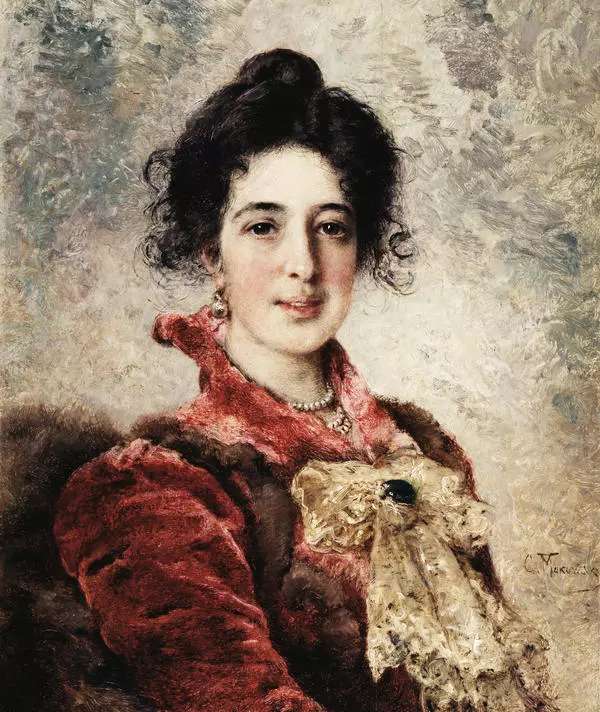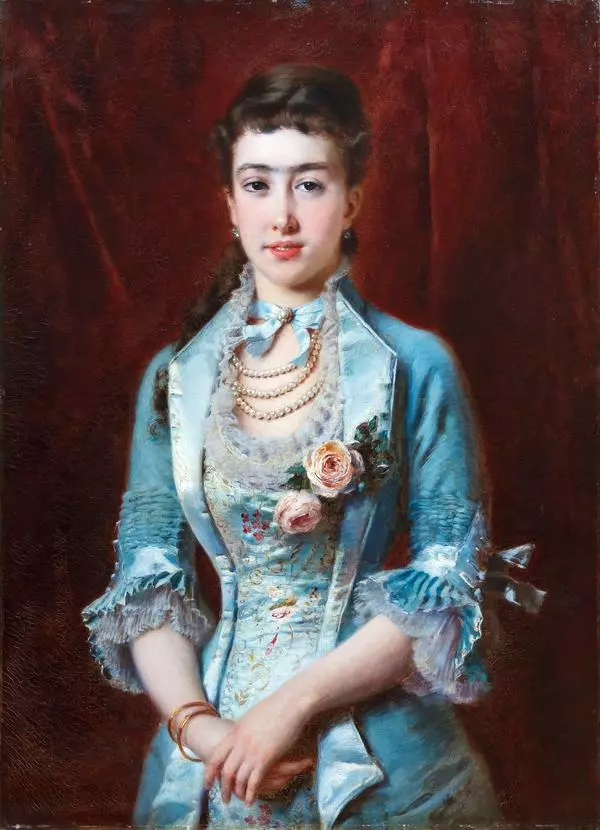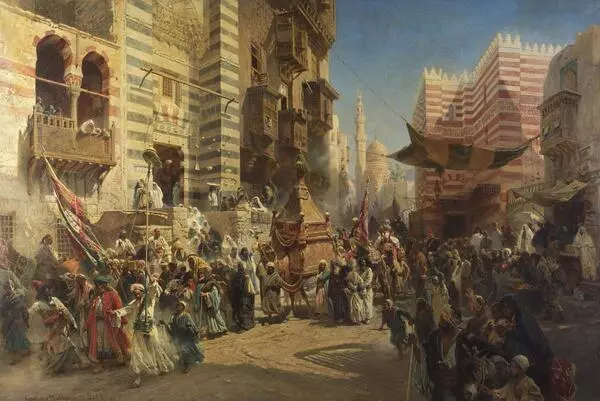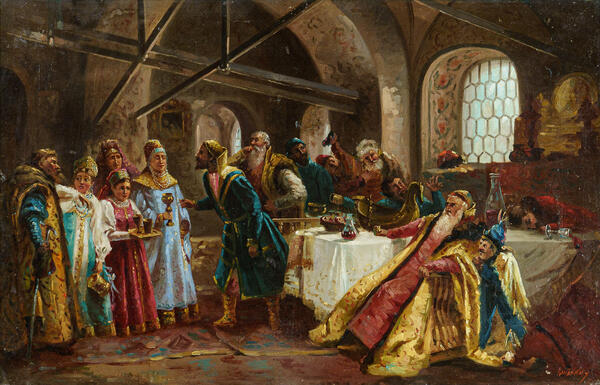Konstantin Makovsky is known as the author of many works on historical subjects. His interest in the theme of peasant life had a significant role in the formation of genre painting within the Russian Peredvizhniki art movement in the second half of 19th century. Heightened curiosity for subjects of this kind came about during the years of a broad social movement called ‘Going to the People’. This fruitful period of genre painting is associated with the time of the Society of Travelling Art Exhibitions, which was founded in 1870 by Konstantin Makovsky. At this time, he traveled all over Russia, collecting material about peasant life.
The painting ‘Peasant lunch in the field’ was created during the heyday of genre painting in Russia. The painting was made in a distinctive manner peculiar to Makovsky. The canvas portrays no criticism or the desire to capture the hardships of a poor life. On the contrary, there is a romanticized image of the Russian peasantry. Warm color and attention to detail, often found in the artist’s works, allow the viewer to admire the beauty of the painted scene and to consider all properties of peasant life.
In 1871, Makovsky’s ‘Peasant lunch in the field’ won the first prize of the Imperial Society for the Encouragement of the Arts. Like all genre compositions, the painting tells about the life of peasant families in the field during the haymaking time. The characters are divided into several groups and are located at different distances from the public. In the foreground, people gathered next to a cauldron are preparing for a meal, children are resting in the background, and unharnessed horses are feeding a little further away.
The characters of the painting are presented in an observable and subtle manner – in the faces and figures of the peasants there is neither tension nor posing ‘for the viewer.’ The images have a portrait quality, united by the same style. Men are depicted as workers and leaders, women are the keepers, and children do not evoke pity or compassion. There is a feeling of the calm passage of life. The simple everyday scene that was taken out of life, rose above the daily routine, revealing all the beauty of a random moment.
The painting ‘Peasant lunch in the field’ was created during the heyday of genre painting in Russia. The painting was made in a distinctive manner peculiar to Makovsky. The canvas portrays no criticism or the desire to capture the hardships of a poor life. On the contrary, there is a romanticized image of the Russian peasantry. Warm color and attention to detail, often found in the artist’s works, allow the viewer to admire the beauty of the painted scene and to consider all properties of peasant life.
In 1871, Makovsky’s ‘Peasant lunch in the field’ won the first prize of the Imperial Society for the Encouragement of the Arts. Like all genre compositions, the painting tells about the life of peasant families in the field during the haymaking time. The characters are divided into several groups and are located at different distances from the public. In the foreground, people gathered next to a cauldron are preparing for a meal, children are resting in the background, and unharnessed horses are feeding a little further away.
The characters of the painting are presented in an observable and subtle manner – in the faces and figures of the peasants there is neither tension nor posing ‘for the viewer.’ The images have a portrait quality, united by the same style. Men are depicted as workers and leaders, women are the keepers, and children do not evoke pity or compassion. There is a feeling of the calm passage of life. The simple everyday scene that was taken out of life, rose above the daily routine, revealing all the beauty of a random moment.



